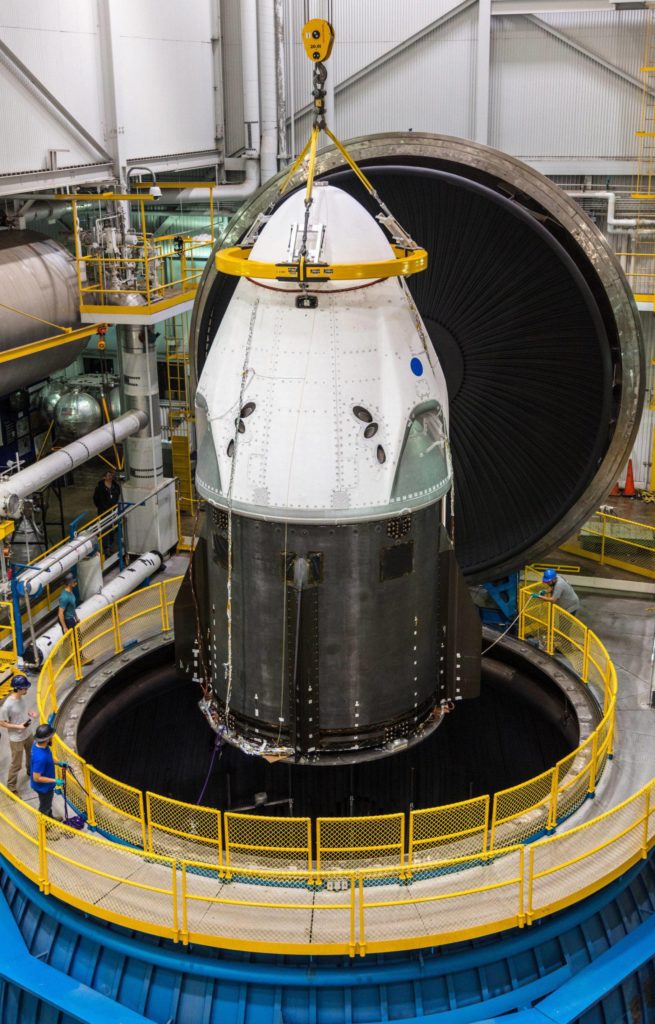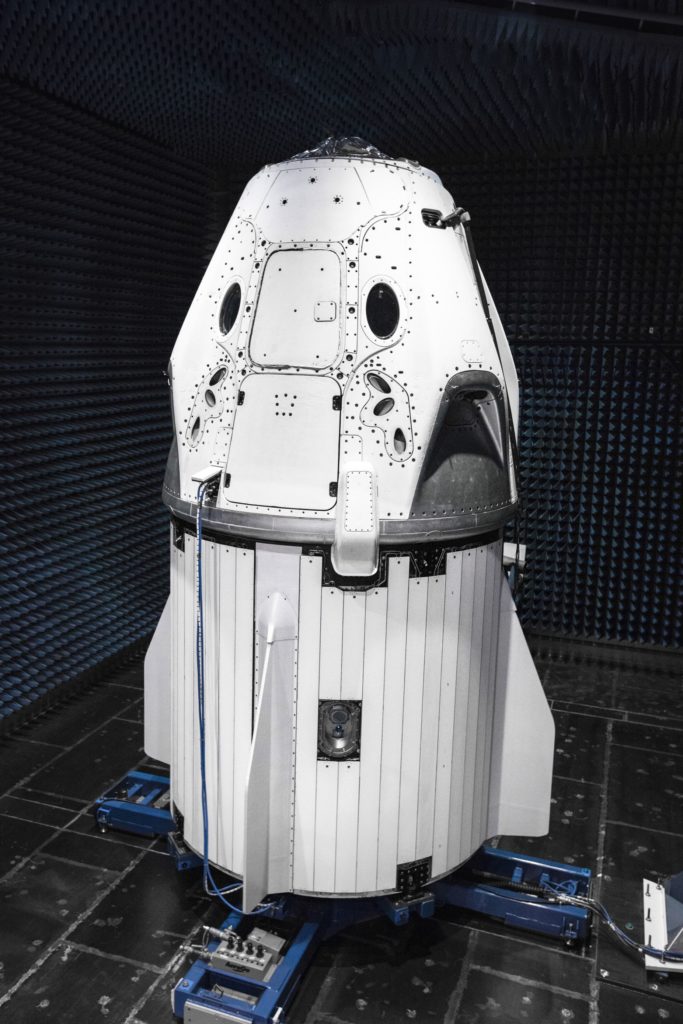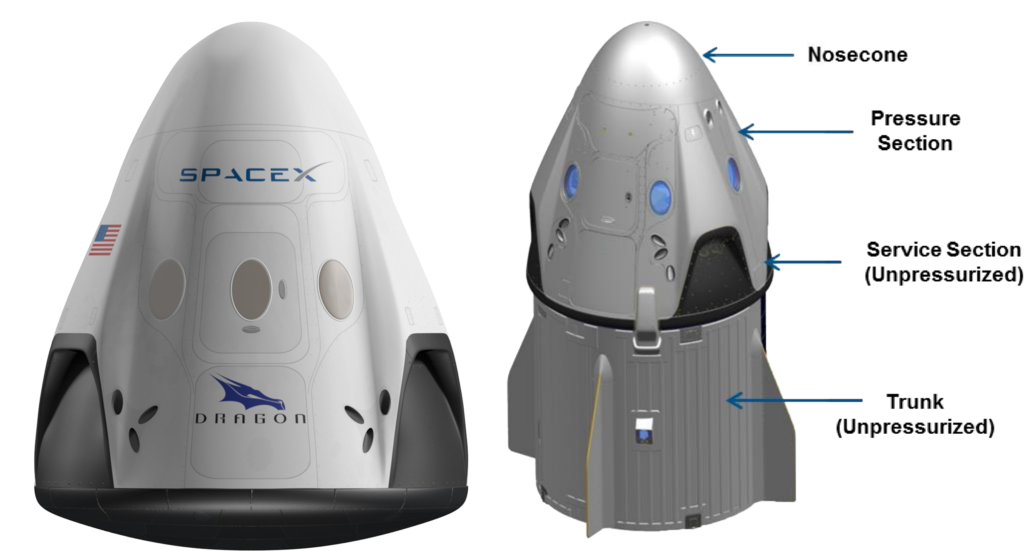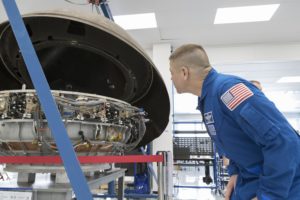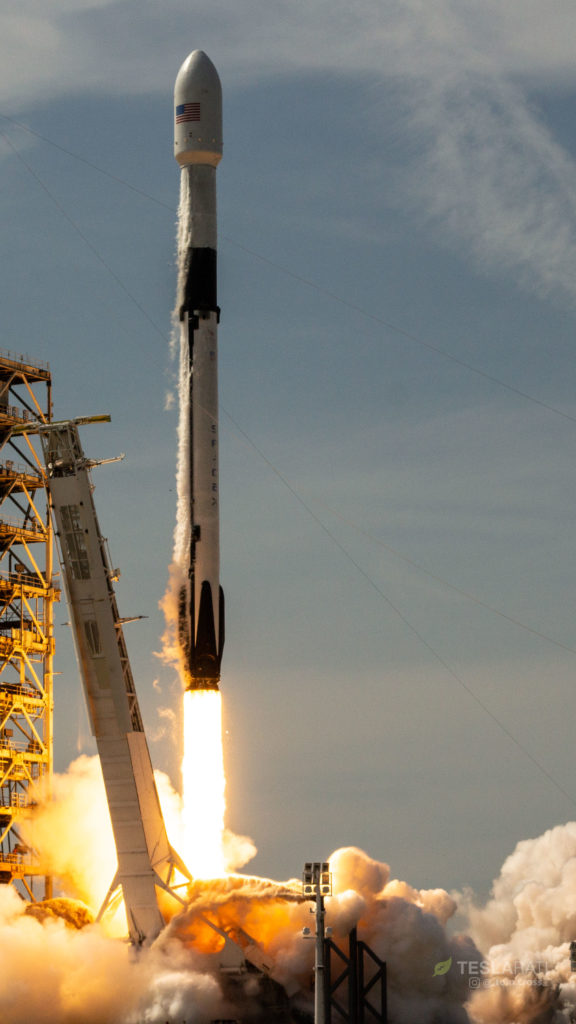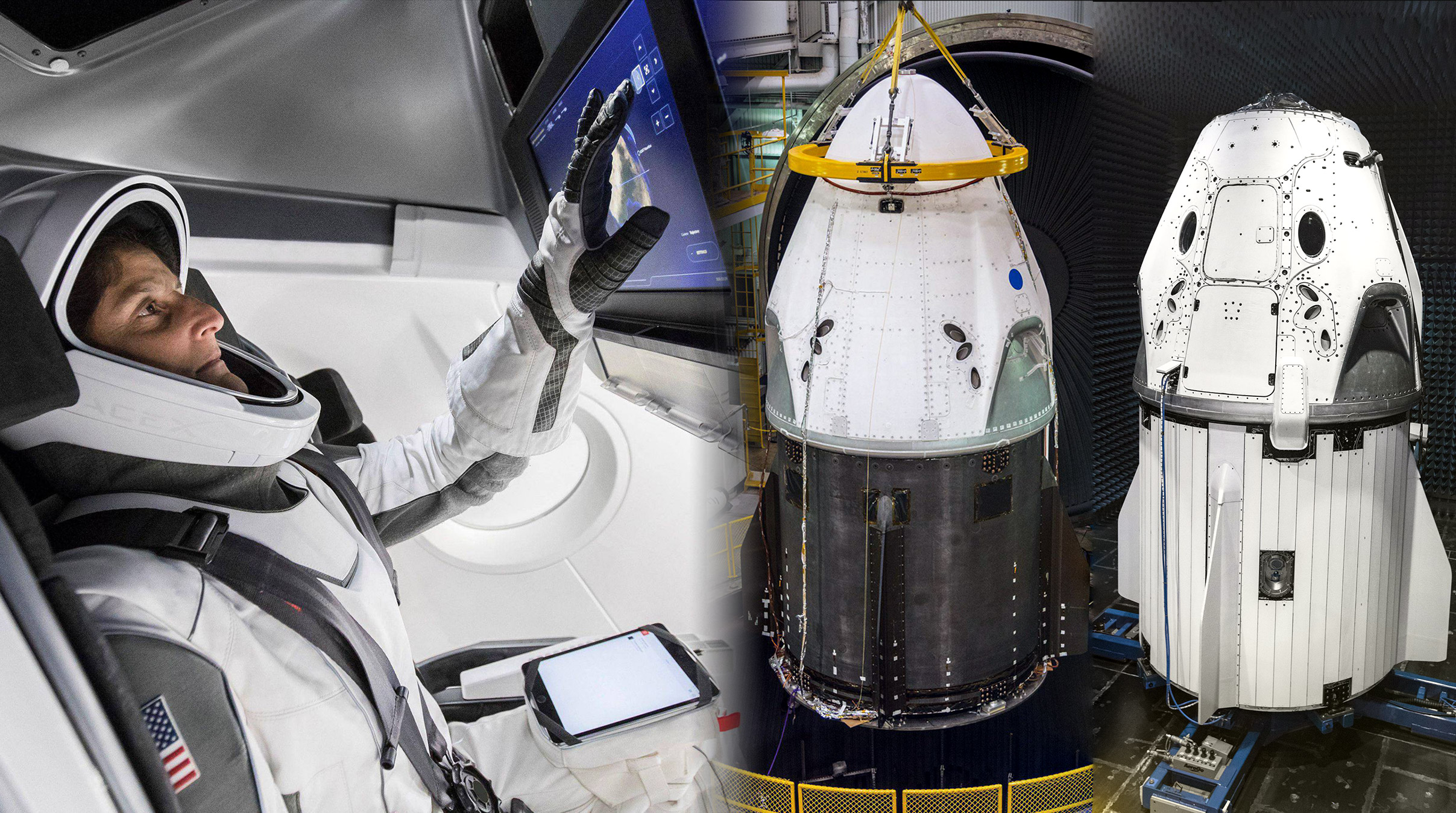

News
SpaceX’s Crew Dragon spaceship marches towards launch with vacuum chamber test
SpaceX has published the latest photo of its next-generation Crew Dragon spacecraft, showing the crewed vehicle preparing to be put through its paces inside a NASA thermal vacuum chamber located in Cleveland, Ohio. If the tests are completed without issue, the Dragon’s next destination will be Cape Canaveral, Florida, where it will prepare for an inaugural launch targeted for the fourth quarter of 2018.
In the photo released on June 20th, SpaceX’s DM-1 Crew Dragon capsule (C202 in shorthand: [C]apsule, Dragon [2], serial number [02]) is seen being craned by SpaceX technicians into the thermal vacuum chamber at NASA’s Plum Brook testing facilities. Located in Ohio, Plum Brook’s vacuum chamber is unique because of both its size and its ability to fairly accurate replicate the actual environment faced by satellites and spacecraft once in space. Most importantly, this includes the extreme thermal conditions those vehicles are subjected to by constant ~90-minute day-night cycles in low Earth orbit (LEO).
Without Earth’s cozy atmosphere to act as both a heat sink and insulating blanket once on orbit, there is simply nothing there to protect spacecraft like Crew Dragon from the absolute extremes of direct solar radiation (sunlight), total darkness, and a complete lack of cooling by conduction and convection. In order to avoid overheating, Crew Dragon thus needs to bring along its own means of cooling in the form of onboard radiators to shed excess heat. The use of white paint on spacecraft further aids this process by selectively preventing the absorption of solar radiation while simultaneously efficiently emitting in infrared wavelengths.
- SpaceX’s Demo Mission-1 Crew Dragon seen preparing for vacuum tests at a NASA-run facility, June 2018. (SpaceX)
- The DM-1 Crew Dragon testing inside SpaceX’s anechoic chamber, May 2018. (SpaceX)
- An overview of Crew Dragon’s main features, all of which can be seen in the real-life photos. The Cargo Dragon version will likely remove seats and windows. (SpaceX)
How to prep your Dragon
Crew Dragon’s primary radiators are elegantly integrated into vertical panels installed on the cylindrical bottom segment, known as the trunk, while the craft’s power source – solar panels in this case – are installed in a curved array on the opposite side of the trunk. Intriguingly, the trunks displayed in the two most recent photos of the DM-1 Crew Dragon appear to be almost completely different, and the trunk at Plum Brook does not appear to have its solar arrays or radiators installed. Nominally, SpaceX would use the thermal vacuum capabilities of the Ohio facility to fully vet Crew Dragon’s ability to maintain optimal temperatures on orbit, but the particularly tests planned for the DM-1 capsule and trunk may be of a slightly different type.
- On February 28, SpaceX completed a demonstration of their ability to recover the crew and capsule after a nominal water splashdown in the Atlantic Ocean, just off the coast of Florida. (SpaceX)
- Astronaut Bob Behnken examines a sample of Crew Dragon docking and crew transfer hardware, the mechanisms that will allow the spacecraft to dock with the International Space Station and allow crew to enter the orbital outpost. Taken March 2017. (SpaceX)
Regardless, after testing at Plum Brook is completed, the DM-1 Crew Dragon capsule will be shipped to a newly-constructed processing facility in Cape Canaveral, Florida, while it’s understood that the trunk installed in SpaceX’s June 20th photo will be returned to the Hawthorne, CA factory to be outfitted with flight hardware (presumably including cameras, radiators, solar arrays, and a healthy amount of insulation). It’s unclear when the two segments of DM-1 will part ways and head on to their next destinations, but it’s likely that testing at Plum Brook will last for at least a handful of weeks.
Birds of a feather
In the meantime, several additional Crew Dragon capsules/trunks and the Falcon 9 Block 5 rockets that will launch them are in a variety of states of fabrication and assembly at SpaceX’s Hawthorne factory. B1051, the Block 5 booster assigned to the first uncrewed Demo-1 launch of Crew Dragon, was reported by NASA to be undergoing propellant tank integration in March 2018, implying that the rocket should be at or near the final stages of integration, and will likely ship to McGregor, Texas for static fire testing late this summer.
As of June 15th, SpaceX’s third Falcon 9 Block 5 booster was vertical on the Texas test stand, likely nearing its own static fire test before being shipped to SpaceX’s Vandenberg Air Force Base launch facilities for the July 20th launch of Iridium-7. While possible that a booster slipped past the watchful eyes and ears of SpaceX enthusiast observers, it’s probable that the rocket currently in McGregor is B1048, implying that a minimum of two additional booster shipments and Texas test programs remain before B1051 can be prepped to launch SpaceX’s first Crew Dragon mission. At the current marginally accelerated booster production and shipment schedule (~ 30-day cadence), B1051 would be expected to leave Hawthorne for Texas no earlier than (NET) late August or early September. This meshes with a recent comment from Commercial Crew astronaut Suni Williams:
“I think we’re going to get the [uncrewed[ demo flights probably by the end of the year, maybe a little after that . . . and then the crew demo missions next year.”
- Falcon 9 Block 5 completed its first launch on May 11, carrying the Bangabandhu-1 communications satellite to geostationary transfer orbit. (Tom Cross)
- SpaceX’s second Block 5 booster was spotted vertical at the company’s McGregor, TX testing facilities. That booster has since been shipped to Florida for a mid-July launch, with B1048 now in its place as of June 15. (Aero Photo)
- A matte-silver Block 5 Merlin 1D rocket engine seen preparing to leave SpaceX’s Hawthorne factory for testing in Texas. (SpaceX)
Anticipating acceptance and prelaunch testing that is far more extensive and time-consuming than typically seen with SpaceX’s commercial missions, it’s safe to bet that the first uncrewed Crew Dragon mission – DM-1 – will launch from Kennedy Space Center in November or December 2018. While those operations proceed over the course of the rest of this year, SpaceX expects roughly 10 additional Falcon 9 and Falcon Heavy launches to occur. It’s gonna be a busy H2.
Follow us for live updates, peeks behind the scenes, and photos from Teslarati’s East and West Coast photographers.
Teslarati – Instagram – Twitter
Tom Cross – Twitter
Pauline Acalin – Twitter
Eric Ralph – Twitter
Elon Musk
Why Tesla’s Q3 could be one of its biggest quarters in history
Tesla could stand to benefit from the removal of the $7,500 EV tax credit at the end of Q3.

Tesla has gotten off to a slow start in 2025, as the first half of the year has not been one to remember from a delivery perspective.
However, Q3 could end up being one of the best the company has had in history, with the United States potentially being a major contributor to what might reverse a slow start to the year.
Earlier today, the United States’ House of Representatives officially passed President Trump’s “Big Beautiful Bill,” after it made its way through the Senate earlier this week. The bill will head to President Trump, as he looks to sign it before his July 4 deadline.
The Bill will effectively bring closure to the $7,500 EV tax credit, which will end on September 30, 2025. This means, over the next three months in the United States, those who are looking to buy an EV will have their last chance to take advantage of the credit. EVs will then be, for most people, $7,500 more expensive, in essence.
The tax credit is available to any single filer who makes under $150,000 per year, $225,000 a year to a head of household, and $300,000 to couples filing jointly.
Ending the tax credit was expected with the Trump administration, as his policies have leaned significantly toward reliance on fossil fuels, ending what he calls an “EV mandate.” He has used this phrase several times in disagreements with Tesla CEO Elon Musk.
Nevertheless, those who have been on the fence about buying a Tesla, or any EV, for that matter, will have some decisions to make in the next three months. While all companies will stand to benefit from this time crunch, Tesla could be the true winner because of its sheer volume.
If things are done correctly, meaning if Tesla can also offer incentives like 0% APR, special pricing on leasing or financing, or other advantages (like free Red, White, and Blue for a short period of time in celebration of Independence Day), it could see some real volume in sales this quarter.
You can now buy a Tesla in Red, White, and Blue for free until July 14 https://t.co/iAwhaRFOH0
— TESLARATI (@Teslarati) July 3, 2025
Tesla is just a shade under 721,000 deliveries for the year, so it’s on pace for roughly 1.4 million for 2025. This would be a decrease from the 1.8 million cars it delivered in each of the last two years. Traditionally, the second half of the year has produced Tesla’s strongest quarters. Its top three quarters in terms of deliveries are Q4 2024 with 495,570 vehicles, Q4 2023 with 484,507 vehicles, and Q3 2024 with 462,890 vehicles.
Elon Musk
Tesla Full Self-Driving testing continues European expansion: here’s where
Tesla has launched Full Self-Driving testing in a fifth European country ahead of its launch.

Tesla Full Self-Driving is being tested in several countries across Europe as the company prepares to launch its driver assistance suite on the continent.
The company is still working through the regulatory hurdles with the European Union. They are plentiful and difficult to navigate, but Tesla is still making progress as its testing of FSD continues to expand.
Today, it officially began testing in a new country, as more regions open their doors to Tesla. Many owners and potential customers in Europe are awaiting its launch.
On Thursday, Tesla officially confirmed that Full Self-Driving testing is underway in Spain, as the company shared an extensive video of a trip through the streets of Madrid:
Como pez en el agua …
FSD Supervised testing in Madrid, Spain
Pending regulatory approval pic.twitter.com/txTgoWseuA
— Tesla Europe & Middle East (@teslaeurope) July 3, 2025
The launch of Full Self-Driving testing in Spain marks the fifth country in which Tesla has started assessing the suite’s performance in the European market.
Across the past several months, Tesla has been expanding the scope of countries where Full Self-Driving is being tested. It has already made it to Italy, France, the Netherlands, and Germany previously.
Tesla has already filed applications to have Full Self-Driving (Supervised) launched across the European Union, but CEO Elon Musk has indicated that this particular step has been the delay in the official launch of the suite thus far.
In mid-June, Musk revealed the frustrations Tesla has felt during its efforts to launch its Full Self-Driving (Supervised) suite in Europe, stating that the holdup can be attributed to authorities in various countries, as well as the EU as a whole:
Tesla Full Self-Driving’s European launch frustrations revealed by Elon Musk
“Waiting for Dutch authorities and then the EU to approve. Very frustrating and hurts the safety of people in Europe, as driving with advanced Autopilot on results in four times fewer injuries! Please ask your governing authorities to accelerate making Tesla safer in Europe.”
Waiting for Dutch authorities and then the EU to approve.
Very frustrating and hurts the safety of people in Europe, as driving with advanced Autopilot on results in four times fewer injuries!
Please ask your governing authorities to accelerate making Tesla safer in Europe. https://t.co/QIYCXhhaQp
— Elon Musk (@elonmusk) June 11, 2025
Tesla said last year that it planned to launch Full Self-Driving in Europe in 2025.
Elon Musk
xAI’s Memphis data center receives air permit despite community criticism
xAI welcomed the development in a post on its official xAI Memphis account on X.
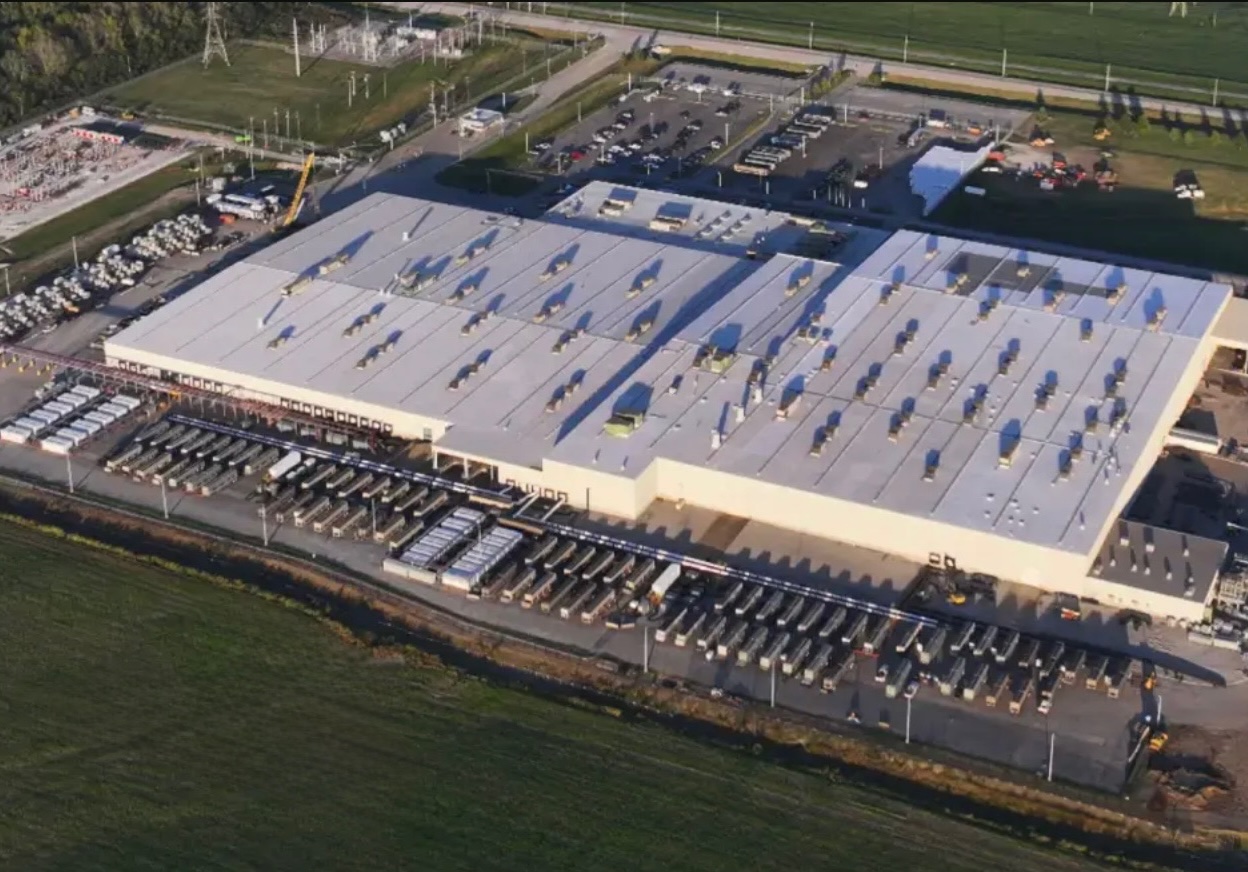
Elon Musk’s artificial intelligence startup xAI has secured an air permit from Memphis health officials for its data center project, despite critics’ opposition and pending legal action. The Shelby County Health Department approved the permit this week, allowing xAI to operate 15 mobile gas turbines at its facility.
Air permit granted
The air permit comes after months of protests from Memphis residents and environmental justice advocates, who alleged that xAI violated the Clean Air Act by operating gas turbines without prior approval, as per a report from WIRED.
The Southern Environmental Law Center (SELC) and the NAACP has claimed that xAI installed dozens of gas turbines at its new data campus without acquiring the mandatory Prevention of Significant Deterioration (PSD) permit required for large-scale emission sources.
Local officials previously stated the turbines were considered “temporary” and thus not subject to stricter permitting. xAI applied for an air permit in January 2025, and in June, Memphis Mayor Paul Young acknowledged that the company was operating 21 turbines. SELC, however, has claimed that aerial footage shows the number may be as high as 35.
Critics are not giving up
Civil rights groups have stated that they intend to move forward with legal action. “xAI’s decision to install and operate dozens of polluting gas turbines without any permits or public oversight is a clear violation of the Clean Air Act,” said Patrick Anderson, senior attorney at SELC.
“Over the last year, these turbines have pumped out pollution that threatens the health of Memphis families. This notice paves the way for a lawsuit that can hold xAI accountable for its unlawful refusal to get permits for its gas turbines,” he added.
Sharon Wilson, a certified optical gas imaging thermographer, also described the emissions cloud in Memphis as notable. “I expected to see the typical power plant type of pollution that I see. What I saw was way worse than what I expected,” she said.
-

 Elon Musk3 days ago
Elon Musk3 days agoTesla investors will be shocked by Jim Cramer’s latest assessment
-

 News1 week ago
News1 week agoTesla Robotaxi’s biggest challenge seems to be this one thing
-

 News2 weeks ago
News2 weeks agoTexas lawmakers urge Tesla to delay Austin robotaxi launch to September
-

 Elon Musk2 weeks ago
Elon Musk2 weeks agoFirst Look at Tesla’s Robotaxi App: features, design, and more
-
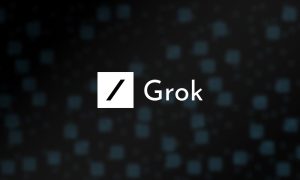
 Elon Musk2 weeks ago
Elon Musk2 weeks agoxAI’s Grok 3 partners with Oracle Cloud for corporate AI innovation
-

 News2 weeks ago
News2 weeks agoSpaceX and Elon Musk share insights on Starship Ship 36’s RUD
-

 News2 weeks ago
News2 weeks agoWatch Tesla’s first driverless public Robotaxi rides in Texas
-

 News2 weeks ago
News2 weeks agoTesla has started rolling out initial round of Robotaxi invites

